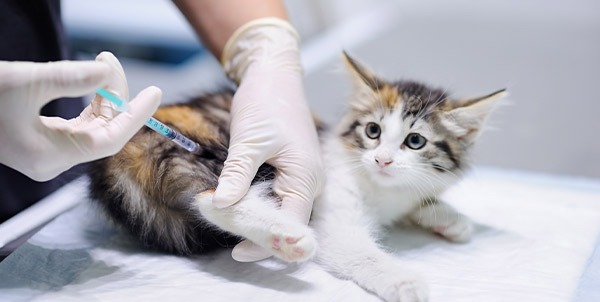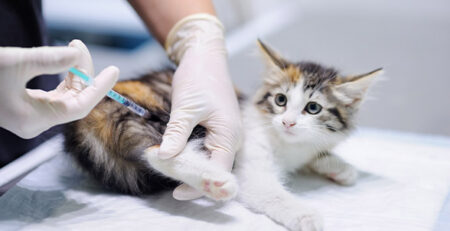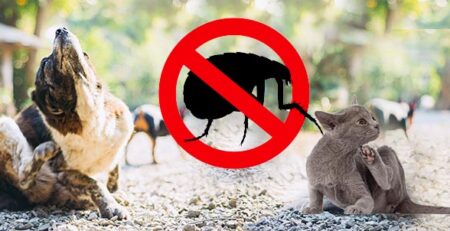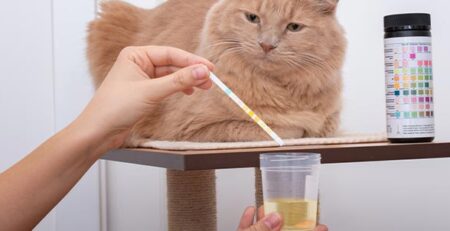Table of Contents
Cat FeLV or feline leukemia virus: one of the most common infectious diseases in cats
It is an infection caused not by a virus as one might believe but by a
retrovirus
.
Retroviruses are viruses that infect cells and reproduce within them resulting in the formation of a provirus that integrates into the genome of the affected cells.
Host cells are no longer able to reproduce and tend to die, thus leading to depression of the immune system.
The retrovirus can persist for a long time even in the latent state or give rise to extremely serious infections.
Just to draw a parallel, HIV affecting humans is a retrovirus, and it is no coincidence that feline FeLV is also known as cat AIDS.
How does FeLV infection occur in the cat?
The most common route of infection is through contact with infected body fluids, especially saliva, but also nasal secretions, urine, feces and breast milk.
Thus, transmission occurs through social contacts or grooming, but can also occur through bite wounds and is greatest in high feline density environments such as colonies in the territory.
After infection, the virus initially replicates in the tonsils, then distributes from the lymphoid system to the bone marrow, intestinal and respiratory and salivary glands (viremic phase).
This process takes approximately two to four weeks but viremia may develop several months later.
This depends on the virulence of the viral strain, the age of the cat, and the reaction of the cat’s immune system.
Kittens under 5 months of age are particularly vulnerable while adult cats are more resistant to infection.
However, most cats remain infected their entire lives.
What can happen after contagion has occurred?
-The cat may develop persistent viremia and manifest clinical signs of infection-related diseases. A persistently viremic cat is a risk to other cats because it shed the virus in the environment.
-The cat resists the evolution of the viremic phase because of the rapid and effective response of its immune system, which neutralizes the virus.
– the cat resists but the virus is not neutralized and remains dormant in the body where it can develop as a result of certain stimuli. A cat with transient viremia may become FeLV-negative.
– the cat becomes infected, the virus remains latent but FeLV-related diseases never develop.
Whether or not the cat exhibits clinical signs related to infection, all FeLV-viremic cats are immunosuppressed.
How to tell if your cat has FeLV?
Manifestations attributable to FeLV are highly variable, but weight loss is one of the first clinical signs of a cat’s deteriorating condition.
They include immunosuppression-related disorders, anemia, malignant lymphoid forms but also dermatitis and immune-mediated diseases.
FeLV-positive cats have an approximately 60 times greater risk of developing lymphomas than FeLV-negative cats.
Symptoms include: vomiting, poor appetite, weight loss, apathy, dyspnea, neurological symptoms.
It is very important that you visit your trusted veterinarian if your cat has these symptoms.
A specific test will verify whether the cat has contracted the virus.
The diagnosis and treatment approach for feline FeLV
Accurate diagnosis is important for both infected and uninfected individuals because the consequences of infection are always, or nearly always, fatal.
There are relatively few effective treatment protocols to date directly aimed at eliminating FeLV infection.
The administration of “Immunomodulators” is used to restore the immune system of FeLV-infected individuals to help the patient keep viremia under control and reduce the incidence of related diseases.
The correct approach to diseases caused by a retrovirus must therefore be directed toward a maintenance of an optimal health status so as to avoid the possibility of the patient contracting other diseases that may aggravate the underlying condition.
How to prevent cat FeLV
There are several precautions to reduce the likelihood of infection:
1)
Sterilize
cats by the age of one year so as to avoid risky mating and fighting with other cats. Spaying/neutering is also indicated in cats already infected so as to prevent transmission of the disease to healthy cats.
2) Vaccinate cats: vaccination for FeLV is recommended in all cats that have the opportunity to go outside and come into contact with potentially infected cats. Before proceeding, however, a blood test should be done to see if the cat has already been infected.
3)
Test
cats for FeLV all new individuals that are introduced within a group of cats.
Be careful if you want to introduce a cat into your home whose epidemiological status you do not know!
If you wish to introduce into your home a cat whose epidemiological status you do not know and other felines are present, testing is imperative.
The cat, although apparently healthy at the moment, may actually manifest the disease at a later time and pose a risk of exposure to the infection for its fellow cats.
How to proceed with inclusion?
If the cat comes from a feline community in the territory, set up an environment separate it from the cats living at home.
Contact your trusted veterinarian and request a thorough checkup.
The veterinarian will subject the cat to an initial specific diagnostic test
If no positives are found, your Veterinarian will ask you to re-examine the cat about a month later since during the pre-viraemic stage of the disease the tests may give negative results.
What if the cat is FeLV-positive?
Many cats die within a few weeks of the onset of the overt disease, but it is also true that as many can live for years if properly and assiduously cared for and looked after.
There is incredible individual variability, which is also related to the accuracy and speed of diagnosis as well as the effectiveness and timeliness of medical treatment.
For FeLV-positive patients, good nutrition, optimal hygienic conditions, periodic checkups and a lot of goodwill from their human companions are essential to maintain good health and long life.
For periodic checkups and practical advice, our Staff Physicians are at your disposal.
We also remind you that in case of need and urgency Clinica La Veterinaria is always open h24 every day including holidays, and with First Aid service from 8 pm to 8 am.
For the joy of seeing them HAPPY











